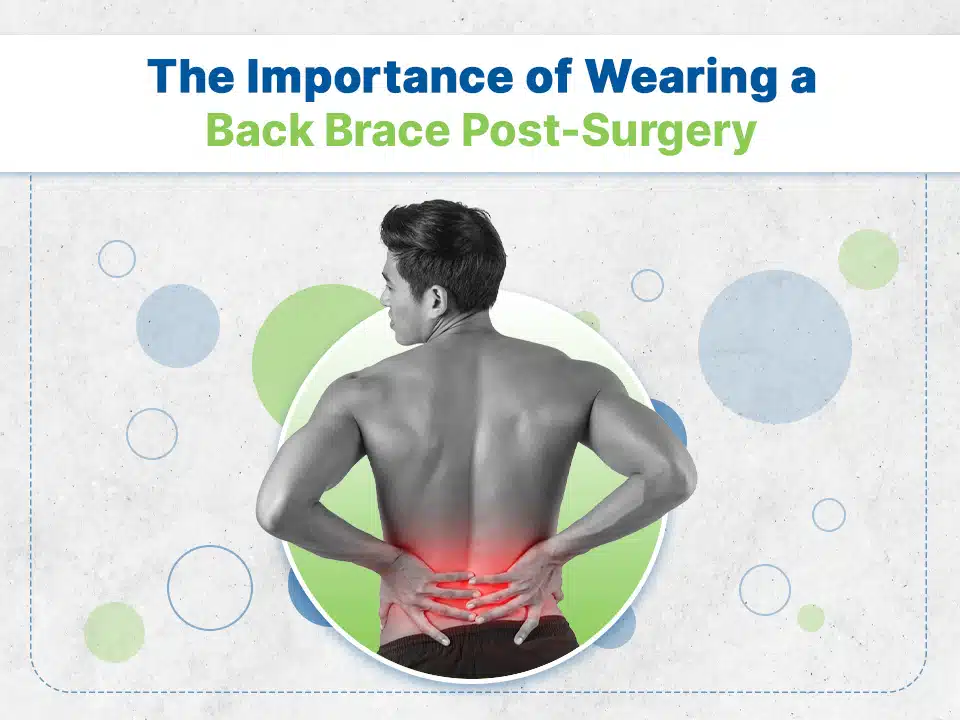Surgery can be a major event in a person’s life, and the road to recovery can be long and difficult. One important tool that can aid in the recovery process is a back brace. Whether you have undergone spinal surgery or any other type of surgery that affects your back, a back brace can provide much-needed support and stability to your spine. In this article, we will explore the importance of wearing a back brace post-surgery, the benefits it provides, and how to choose the right one for your needs.
Why Wear a Back Brace Post-Surgery?

Why Wear a Back Brace Post-Surgery?
There are several reasons why wearing a back brace post-surgery is important. First and foremost, it provides support to your spine, which is crucial for proper healing. After surgery, your spine may be weakened or vulnerable, and wearing a brace can help to protect it from further injury. Additionally, a back brace can help to reduce pain and discomfort, which is especially important during the early stages of recovery when pain is typically at its worst.
Another important reason to wear a back brace post-surgery is to promote proper alignment of your spine. When your spine is properly aligned, it is less likely to experience further damage or injury. A back brace can help to keep your spine in the correct position, which can be especially important if you have undergone surgery to correct a spinal deformity or injury.
Types of Back Braces
Back braces come in various types, and the one you choose will depend on the type of surgery you have undergone and the level of support you need. Some common types of back braces include:
- Rigid braces: These braces are made of hard materials such as plastic or metal and provide the highest level of support and stability. They are often recommended for more serious spinal conditions or injuries.
- Soft braces: These braces are made of softer materials such as foam or neoprene and provide a moderate level of support and flexibility. They are often used for more minor injuries or post-operative support.
- Corset braces: These braces are designed to fit around the waist and lower back, providing support to the lumbar spine. They are often used for conditions such as herniated discs or lower back pain.
Benefits of Wearing a Back Brace Post-Surgery
There are several benefits to wearing a back brace post-surgery. These include:
- Increased stability: A back brace can provide additional stability to your spine, which can help to prevent further injury and promote proper healing.
- Reduced pain: Wearing a back brace can help to reduce pain and discomfort, especially during the early stages of recovery.
- Improved mobility: While it is important to rest and allow your body time to heal after surgery, wearing a back brace can actually help to improve your mobility by providing support to your spine.
- Improved posture: A back brace can help to improve your posture by keeping your spine in the correct position. This can be especially important if you have undergone surgery to correct a spinal deformity.
- Prevention of further injury: By providing support and stability to your spine, a back brace can help to prevent further injury or damage to your back.
Choosing the Right Back Brace

Choosing the Right Back Brace
Choosing the right back brace is important to ensure that you get the maximum benefit from wearing it. There are several factors to consider when choosing a back brace, including:
- The type of surgery you have undergone: The type of surgery you have had will determine the level of support you need from your back brace.
- The severity of your injury: If your injury is severe, you will likely need a back brace with more support and stability.
- The size and shape of your body: It is important to choose a back brace that fits properly and is comfortable to wear.
- The material of the back brace: Back braces are typically made from a variety of materials, including neoprene, foam, and elastic. Each material has its own advantages and disadvantages, so it is important to choose the one that is right for you.
- The level of adjustability: Some back braces are more adjustable than others, which can be important if you need to make frequent adjustments to your brace.
Read More: How Back Braces Help Improve Posture in Seniors?
When to Wear a Back Brace?
The timing of when to wear a back brace post-surgery will depend on the type of surgery you have undergone and the advice of your doctor or physical therapist. In general, you will likely need to wear your back brace for several weeks or months after surgery, depending on the level of support you need.
It is important to follow your doctor’s advice regarding when to wear your back brace and for how long. Your doctor may recommend wearing the back brace all day or only during certain activities, such as when lifting or bending. They may also recommend gradually reducing the amount of time you wear the back brace as your recovery progresses.
In addition to following your doctor’s advice, it’s important to listen to your body when it comes to wearing a back brace. If you experience discomfort or pain while wearing the brace, it may be too tight or put too much pressure on certain areas of your back. In this case, it’s important to adjust the fit of the brace or speak with your healthcare provider to determine if a different type of brace is needed.
It’s also important to note that wearing a back brace should be just one part of your post-surgery recovery plan. Other important aspects of recovery may include physical therapy, exercise, pain management, and proper nutrition. By taking a comprehensive approach to recovery, you can give yourself the best chance of success and a speedy recovery.
Some additional tips for wearing a back brace post-surgery
By following these tips and working closely with your healthcare provider, you can successfully wear a back brace post-surgery and give yourself the best chance of a successful recovery.
- Make sure the brace fits properly. A well-fitted back brace should provide support without being too tight or uncomfortable.
- Follow your doctor’s instructions for wearing the brace, including how long to wear it and when to remove it.
- Gradually reduce the amount of time you wear the brace as your recovery progresses.
- Don’t rely solely on the back brace for support. Incorporate other aspects of post-surgery care, such as physical therapy and exercise.
- Stay in communication with your healthcare provider throughout the recovery process. If you have any concerns or questions about wearing the back brace or your overall recovery, don’t hesitate to speak with your doctor or physical therapist.
In Conclusion
Wearing a back brace after back surgery is important for providing additional support, maintaining proper spinal alignment, managing pain, providing psychological support, encouraging physical activity, and promoting faster recovery. Patients should work closely with their healthcare provider to determine the best type of back brace for their needs and follow their recommendations for wearing it. With the right care and support, patients can successfully recover from back surgery and return to their normal activities.
Our back braces feature adjustable compression systems and are available for lower and mid-back support. If you’re not sure what product is right for you or if you’re eligible for insurance coverage, Artik Medical Supply will provide the guidance you need. We can even communicate with your doctor to determine the best back brace for you. Contact us today to check for insurance coverage.
Article Key Phrases
- Back brace for post-surgery recovery.
- Importance of wearing a back brace.
- Benefits of using a back brace after surgery
- Back brace after surgery
- Back brace for pain relief after surgery







